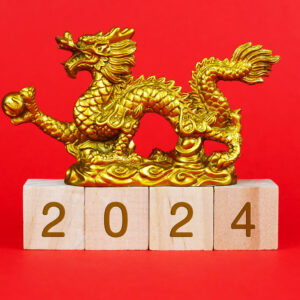
Convertible bonds are often overlooked assets, but they can offer a useful defensive position against a backdrop of high interest rates and geopolitical tensions.
In the space of three years, the world has seen a global pandemic, a war between Russia and Ukraine and now an armed conflict in the Middle East between Israel and Hamas. Against this uncertain and frightening geopolitical backdrop, the central banks (the US Federal Reserve and the European Central Bank) have embarked on a cycle of rapid and significant interest rate rises to combat inflation and put an end to years of accommodative monetary policy.
While geopolitical events have had an impact on equity market performance and volatility, the central banks’ paradigm shift created very unfavourable conditions for convertible bonds in 2022. These are essentially fixed income corporate debt instruments, which yield interest payments. But they can also be converted into a designated number of equity shares.
Indeed, the rise in interest rates, the widening of credit spreads, the fall in equity markets and a slight increase in equity volatility all worked against the asset class, and this lack of decorrelation made 2022 one of the worst years for convertible bonds.
However, despite this backdrop, there are many signs that it is time to take a renewed interest in this asset class as part of a global allocation portfolio.
Favourable conditions
It is important to note that, historically, convertible bonds have performed well in an environment of high interest rates. In addition, as in the period 1998-2001, cycles of rising short-term interest rates generate an increase in equity volatility, which supports valuations. This asset class is one of few financial products allowing investors to buy long equity volatility – usually five years’ worth – at attractive levels.
The widening of credit spreads since last year is an attractive entry point and could generate additional performance for the equity component of the bond in future. The end of the period of zero or even negative interest rates has also led to a return to positive yields and coupons, creating a situation where investors are being actually being ‘paid’ to wait.
Finally, the natural convexity of convertible bonds makes them a particularly attractive solution in the current uncertain geopolitical climate. They allow investors to position themselves in the equity market with a lower risk/volatility budget than a direct equity investment. Convertible bonds are even be considered by some as a “defensive equity” position.
Primary market
Investors have come to terms with the fact that the fight against inflation means interest rates will be kept at high levels for some time.
There are many reasons why companies should issue a convertible bond. Issuing a convertible bond with a five-year maturity means the company is making a capital increase deferred over time (five years) and at a price corresponding to the current share price plus a premium. This enables the company to monetise the volatility of its share price and, above all, to save on financial costs, thanks to a lower coupon than a conventional bond.
Companies, which have benefited in the past from the possibility of refinancing at extremely attractive or even zero rates, will have to face a ‘refinancing wall’ from 2024 onwards. Clearly, the primary market for convertible bonds will benefit from the refinancing of the $784bn of worldwide corporate debt arriving at maturity between 2023 and 2026. Already, 2023 is a much better year than 2022, and above all, the terms and pricing of new issues have adjusted to the new environment, with most issues priced below their theoretical value.
Asset allocation
Including an investment in convertible bonds can have several advantages for investors. The convexity of this financial product makes it possible to improve the risk-return profile of an overall portfolio. Current financial conditions provide an entry point to benefit from future easing of interest rates, a potential narrowing of corporate credit spreads, an upturn in the markets and equity volatility.
All these factors will make it more attractive. This opportunity arises against a backdrop of pricing at a discount to its theoretical value, with yields/coupon returning to positive territory and no market timing.
Times of tension
Depending on the starting position, economically speaking, convertible bonds have displayed diverse outcomes during historical geopolitical tensions.
If interest rates are low, credit spreads tight, equity markets are high and equity volatility is low, investors’ reaction will probably switch into risk-off mood and those tensions will potentially trigger economic responses which will be negative for investors. For instance, at the end of 2018, ongoing geopolitical issues (including Brexit and Donald Trump’s administrative policies) triggered a significant drop in equity markets, whereas the convertible bond asset class showed more resiliency.
Nobody knows for certain what will be the resolution of today’s political issues or where financial markets will be heading in the next few months. However, whatever the outcome, financial conditions are much more in favour of convertible bonds. The performance of convertibles during periods of geopolitical uncertainty underscores the importance of considering a range of factors, such as the terms of the bonds and individual portfolio objectives, to make informed investment decisions in challenging times.

Eric Daniel is a convertible bond strategy manager at Quaero Capital





